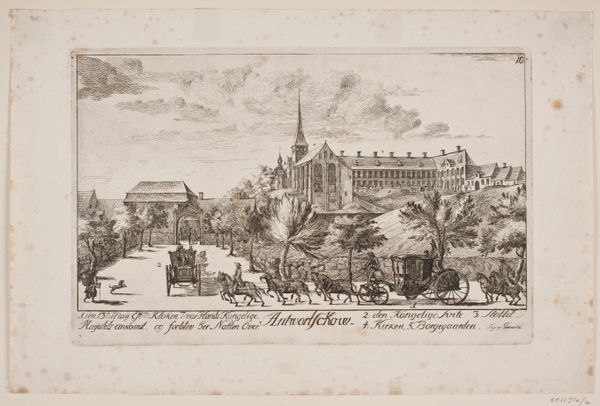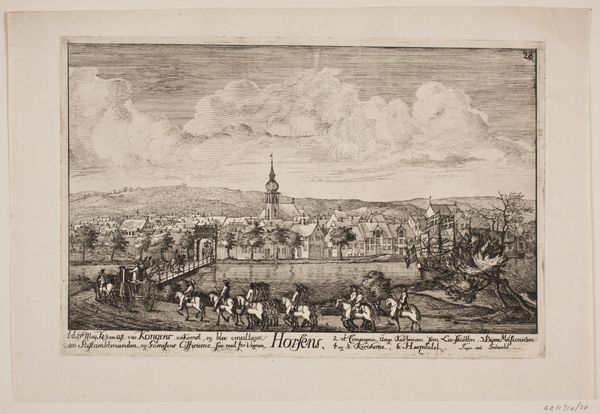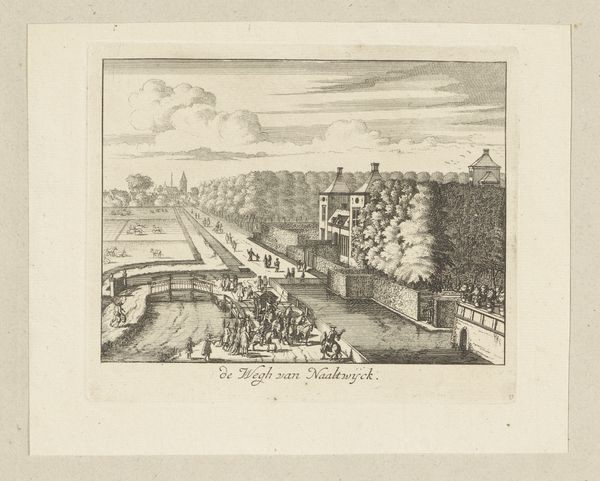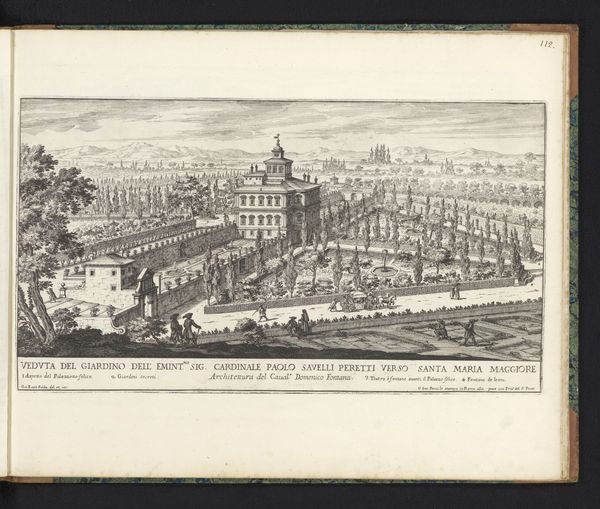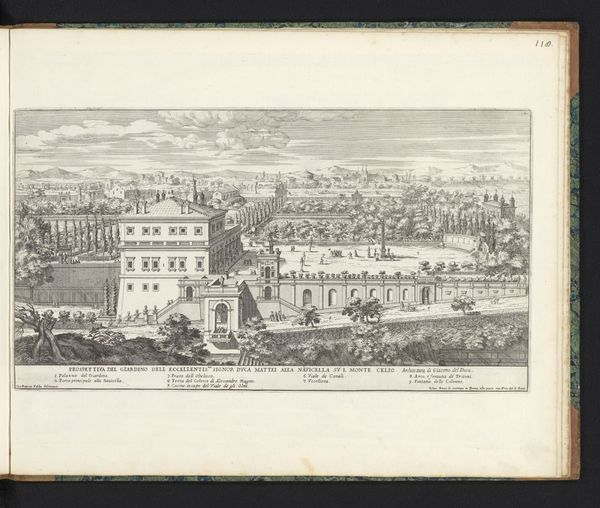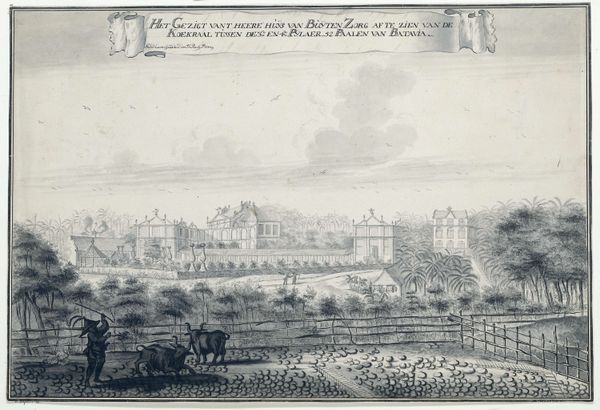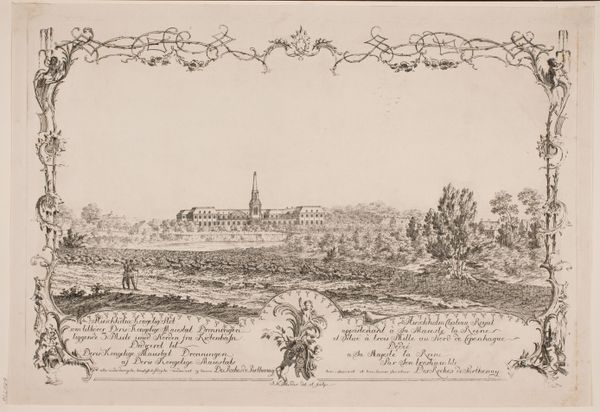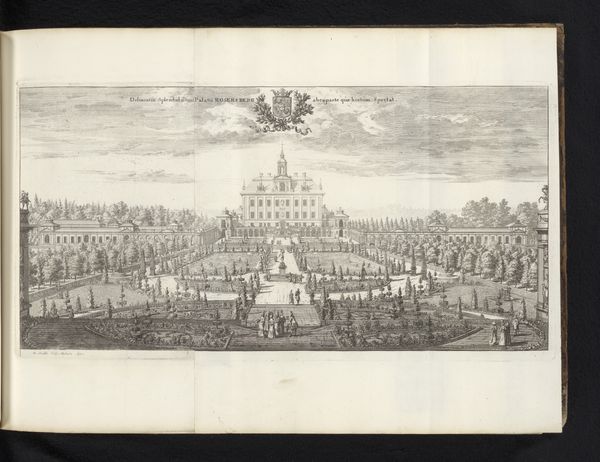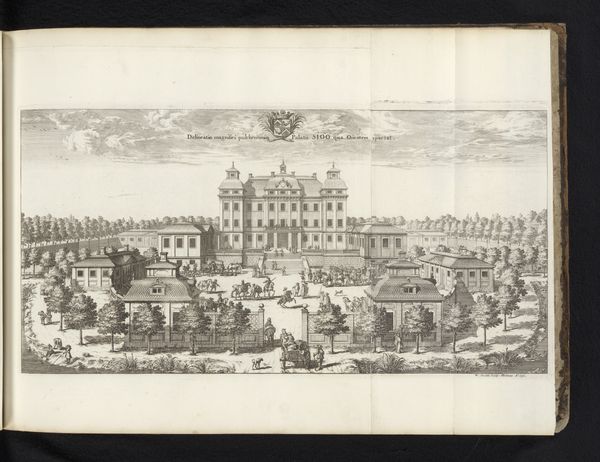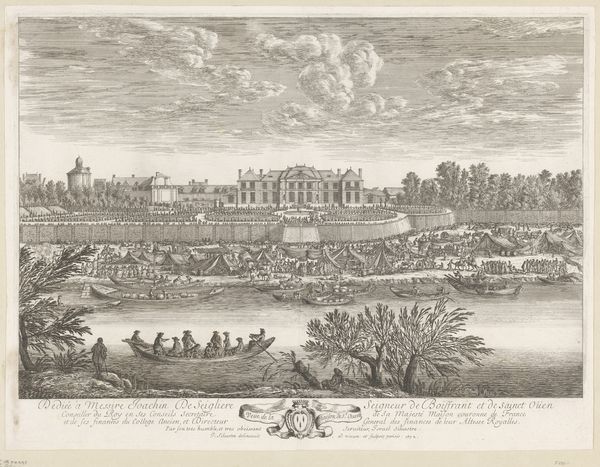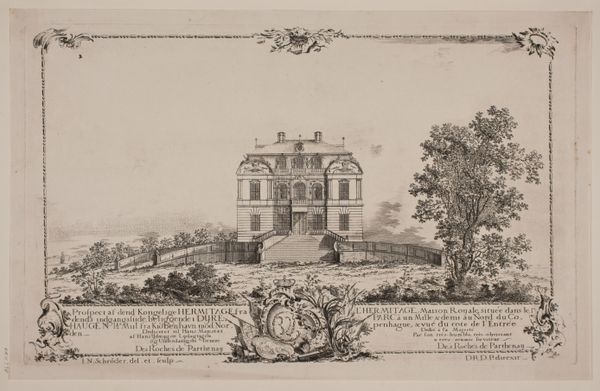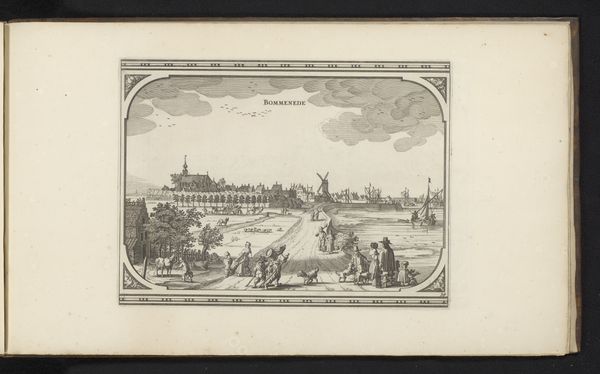
print, etching, engraving
#
baroque
# print
#
etching
#
pencil sketch
#
landscape
#
etching
#
cityscape
#
engraving
Dimensions: 269 mm (height) x 435 mm (width) (plademaal)
Curator: Up next, we have a cityscape of Amalienborg Palace and its pleasure gardens, created as a print in the 1740s by J.N. Schrøder. The work employs etching and engraving techniques to render a highly detailed vista. Editor: My first thought is how remarkably formal and ordered the whole scene appears. The palace, the gardens – everything is regimented, precise. The overall tonality lends a certain austere beauty to the work. Curator: Indeed, Schrøder’s baroque sensibilities are on full display. Note how the very structure of the print, with its decorative borders, reinforces this sense of order. But let's consider the socio-political climate—Denmark's monarchy sought to project an image of power and stability. Editor: But does that not create a sense of distance? Look at the trees, rendered en masse. It almost reduces the natural world to just another element in the overall composition rather than a place to find tranquility. I wonder if this presentation catered to the expectations of an aristocratic clientele? Curator: That's perceptive. Prints like these often served as propaganda. Schrøder wasn't simply documenting; he was carefully constructing a narrative of royal grandeur and control for a specific public, primarily within the court and its circle. Editor: Still, the composition, with its careful arrangements of lines and forms, shows Schrøder’s technical skill. We observe linear elements juxtaposed against clustered forms which makes this rendering visually intricate. It serves as a testament to the techniques of the baroque. Curator: Exactly. He deftly translates architectural form and manicured landscapes into an elegant visual statement, idealizing Copenhagen, for local audiences, but also marketing an image of the monarchy to international figures. The dedication printed within the work confirms this goal. Editor: Thinking about the dedication, the positioning of the texts and coats of arms makes a strong symbolic statement on the relationships between monarchy, noble family, and the city. A calculated visual tableau representing established powers and status, indeed. Curator: Precisely. A powerful visual document indeed. Thank you for offering that perceptive, textural reading! Editor: My pleasure, especially given the chance to appreciate how the work and its context reveal so much about power structures of the era.
Comments
No comments
Be the first to comment and join the conversation on the ultimate creative platform.
